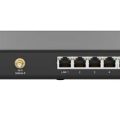How to Spot Counterfeit D-Link Systems: A Comprehensive Guide
In today’s digital age, networking devices have become indispensable for both homes and businesses. D-Link, a leading brand in networking solutions, offers a wide range of routers, switches, and other equipment. However, the popularity of D-Link products has also attracted counterfeiters who seek to capitalize on the brand’s reputation by selling substandard products.
Purchasing a counterfeit D-Link system can lead to a variety of problems, including:
- Security vulnerabilities: Counterfeit devices may have security flaws that can expose your network to hackers and malware.
- Performance issues: Counterfeit products often use inferior components, resulting in slow speeds, frequent disconnections, and unreliable performance.
- Lack of warranty support: You will not be able to get warranty support from D-Link for counterfeit products.
- Financial loss: Counterfeit devices are typically cheaper than genuine products, but they can end up costing you more in the long run due to their lack of reliability and performance.
Therefore, it’s crucial to be able to distinguish genuine D-Link systems from counterfeits. This guide provides a comprehensive overview of the key factors to look for when purchasing D-Link products.
Let’s delve into some of the most frequently asked questions related to spotting counterfeit D-Link systems:
How Can I Tell If a D-Link Router is Real or Fake?
Identifying a genuine D-Link router involves a careful examination of its physical features, packaging, and accompanying documentation. Here are some key points to consider:
1. Packaging and Labeling
- Authentic Packaging: Genuine D-Link routers are packaged in boxes with high-quality printing, clear labeling, and a distinctive design. Look for consistent fonts, colors, and logos across the packaging.
- Barcodes and Serial Numbers: Authentic D-Link routers have barcodes and serial numbers that are accurately printed and match the product inside. The serial number should be consistent across the box and the device itself. If the numbers appear misaligned, faded, or scratched, it could be a sign of a counterfeit.
- Language Consistency: The packaging, manuals, and other materials should be in the same language and match the product’s intended market. If there are inconsistencies or mismatched languages, it may indicate a counterfeit.
2. Device Features
- Hardware Quality: Genuine D-Link routers have well-built hardware with smooth, seamless surfaces and high-quality components. Inspect the device for any rough edges, misaligned parts, or loose connections. Counterfeit devices may have lower-quality materials and construction.
- Antenna Design: Authentic D-Link routers typically have well-designed antennas with a distinctive shape and size. Counterfeit routers might have antennas that are flimsy, mismatched, or lack the brand logo.
- Lights and LEDs: Check the lights and LEDs on the router. Genuine D-Link routers have consistently colored and bright LEDs that correspond to the device’s functions. Counterfeit devices may have dim, unevenly colored LEDs, or LEDs that don’t function properly.
3. Software and Functionality
- Firmware Version: Genuine D-Link routers have specific firmware versions that can be verified online. If the firmware version seems unusual or doesn’t match the device’s model, it may be a counterfeit.
- Web Interface: Access the router’s web interface and check for the D-Link logo, branding, and a consistent interface design. Counterfeit devices may have a web interface that is poorly designed, lacks D-Link branding, or has unusual elements.
- Wireless Connectivity: Test the router’s wireless connectivity. Counterfeit devices may have poor wireless signal strength, frequent disconnections, or limited functionality.
4. Additional Tips
- Purchase from Reputable Retailers: Buy D-Link products from authorized retailers or online marketplaces that have a proven track record of selling genuine products.
- Check Reviews and Feedback: Read customer reviews and feedback from other users to get an idea of the product’s authenticity and performance.
- Compare Prices: If a D-Link product seems significantly cheaper than the market price, be cautious. It may be a counterfeit.
By considering these factors, you can greatly minimize the risk of buying a counterfeit D-Link router. Always be vigilant, and don’t hesitate to ask for clarification if something seems off.
What Are Some Signs That My D-Link Router is a Counterfeit?
In addition to the general tips mentioned earlier, there are several specific signs that can help you identify a counterfeit D-Link router. These signs often relate to variations in quality, design, and functionality:
- Poorly Printed Packaging: The packaging may have blurry or misaligned printing, faded colors, or inconsistent fonts. The logo and branding may look distorted or low-quality.
- Mismatched Serial Numbers: The serial number on the box may not match the one on the device or be inconsistent across different components. This can be a significant indicator of a counterfeit.
- Missing or Inaccurate Information: Important details like the model number, specifications, or warranty information may be missing or inaccurate on the packaging and documentation.
- Low-Quality Hardware: The router’s exterior may have rough edges, misaligned parts, or feel flimsy. The plastic casing might be thin, and the overall build quality may appear substandard.
- Uneven Antenna Placement: The antennas may be poorly placed, misaligned, or lack the usual D-Link logo. They may also feel flimsy or unstable.
- Dim or Miscolored LEDs: The LEDs on the router may be dim, unevenly colored, or not function as expected. For instance, the power light may not turn on, or other LEDs may be constantly on or off.
- Inconsistent Firmware: The firmware version may not match the expected version for the specific model or may appear outdated. This can indicate a counterfeit or a modified device.
- Slow or Unreliable Connectivity: The router may have slow internet speeds, frequent disconnections, or difficulty connecting to devices. This is a common sign of a counterfeit device with inferior hardware and software.
- Unusual Web Interface: The router’s web interface may look different from the expected design, lack the D-Link logo, or have unusual or poorly designed elements.
- Lack of Warranty Information: The device may not have warranty information or may not be covered by D-Link’s warranty. This is a strong indicator of a counterfeit product.
If you notice any of these signs, it’s highly likely that you’re dealing with a counterfeit D-Link router. Be wary and take precautions to avoid purchasing a fake device. Always purchase from reputable sources, inspect the product carefully, and compare it to the genuine product’s features and specifications.
How Do I Verify the Authenticity of a D-Link Router?
Verifying the authenticity of a D-Link router is essential to ensure you’re getting a genuine and reliable product. There are several methods you can employ to validate the router’s authenticity:
- D-Link’s Official Website: Visit D-Link’s official website and access their product database. Search for the specific model number of the router you are interested in. The website will provide detailed information, including the product specifications, images, and features. Compare the information provided with the router you are considering. Any discrepancies can be a red flag.
- D-Link’s Support Portal: Contact D-Link’s customer support or technical support for assistance in verifying the authenticity of the product. They can guide you through the process of identifying genuine devices.
- Authenticity Check Tools: D-Link may offer specific tools or resources on their website to help customers verify the authenticity of their products. These tools might involve entering a serial number or a unique product code to retrieve authentication details.
- Third-Party Websites: Some third-party websites, such as online marketplaces, provide authentication services for electronic devices. These services may use various methods to verify the device’s authenticity, such as checking serial numbers or analyzing device hardware.
By utilizing these methods, you can increase your confidence in the authenticity of the D-Link router you are considering. It’s always advisable to err on the side of caution and verify the product’s authenticity before making a purchase.
What Are Some Tips for Buying a Genuine D-Link Router?
To avoid falling victim to counterfeit D-Link routers, follow these tips when making a purchase:
- Purchase from Authorized Retailers: Always buy D-Link products from authorized retailers or online marketplaces that have a reputation for selling genuine products. Check D-Link’s official website for a list of authorized retailers in your area.
- Check for Certifications and Logos: Look for certifications and logos on the packaging and the device itself, such as FCC, CE, and RoHS, which indicate that the product meets certain standards. Genuine D-Link routers will typically have these certifications.
- Read Customer Reviews: Before purchasing a router, read customer reviews from other buyers to get insights into the product’s quality and authenticity. Look for reviews that mention the router’s performance, features, and build quality. Be cautious if you find reviews that mention counterfeit or defective devices.
- Compare Prices: Be wary of suspiciously low prices, especially if they are significantly lower than the market price for the same model. Counterfeiters often offer lower prices to attract buyers.
- Ask for a Warranty: Insist on a warranty from the seller. Genuine D-Link routers come with a warranty that covers defects and malfunctions. Counterfeit devices may not have a warranty or may offer a limited warranty.
By following these tips, you can significantly reduce the risk of purchasing a counterfeit D-Link router. Remember that buying from reputable sources, conducting thorough research, and comparing prices are essential steps in ensuring you get a genuine and reliable product.
What Can I Do If I Believe I Have Purchased a Counterfeit D-Link Router?
If you suspect you have bought a counterfeit D-Link router, there are several steps you can take:
- Contact D-Link Support: Report your concerns to D-Link’s customer support or technical support. They can help you verify the authenticity of the product and provide guidance on how to proceed.
- Contact the Seller: Reach out to the retailer or seller from whom you purchased the router and inform them of your suspicions. They may be able to offer a refund or exchange if they confirm the product is counterfeit.
- Report to Law Enforcement: If you believe you have purchased a counterfeit product, consider reporting it to local law enforcement or the authorities responsible for intellectual property rights.
- Dispose of the Router Safely: If you’re unable to obtain a refund or exchange, dispose of the router safely. Counterfeit devices may have security vulnerabilities that could expose your network to threats.
It’s important to act swiftly if you suspect a counterfeit. Taking immediate action can help protect your network and prevent future issues.
How Can I Protect My Network from Counterfeit D-Link Devices?
Protecting your network from counterfeit D-Link devices requires a proactive approach. Consider these tips:
- Buy from Reputable Sources: Always purchase networking devices from authorized retailers or online marketplaces with a history of selling genuine products. Avoid purchasing from unknown or untrustworthy sellers.
- Check for Certifications: Look for certifications on the device’s packaging and the device itself, such as FCC, CE, and RoHS, which indicate the product meets specific standards.
- Verify the Firmware: Regularly check the firmware version of your D-Link router and ensure it matches the expected version for your model. Counterfeit devices may have outdated or inconsistent firmware.
- Monitor Your Network Traffic: Use a network monitoring tool to keep an eye on your network traffic and identify any unusual activity. Counterfeit devices may generate suspicious traffic patterns.
By taking these preventative measures, you can significantly reduce the risk of having counterfeit D-Link devices on your network.
Table Summarizing Key Points
Here’s a summary of key points to keep in mind when spotting counterfeit D-Link systems:
| Feature | Genuine D-Link | Counterfeit D-Link |
|---|---|---|
| Packaging and Labeling | High-quality printing, clear labeling, consistent design | Poorly printed, misaligned printing, faded colors, inconsistent fonts |
| Device Features | Well-built hardware, smooth surfaces, high-quality components | Rough edges, misaligned parts, flimsy build, low-quality materials |
| Software and Functionality | Specific firmware versions, consistent web interface, reliable wireless connectivity | Inconsistent firmware, unusual web interface, slow or unreliable connectivity |
| Additional Tips | Purchase from authorized retailers, check reviews and feedback, compare prices | Suspicious low prices, lack of warranty information, inconsistent branding |
Frequently Asked Questions
How do I identify a genuine D-Link router from a counterfeit one?
To spot a counterfeit D-Link router, look for inconsistencies in packaging, hardware, software, and branding. Inspect the box for quality printing, verify serial numbers, examine the device for well-built hardware, check firmware versions, and review the web interface. Counterfeit routers may have poorly printed packaging, mismatched serial numbers, flimsy construction, unusual firmware versions, or a poorly designed web interface.
What are some of the signs of a counterfeit D-Link router?
Signs of a counterfeit D-Link router include poorly printed packaging, mismatched serial numbers, low-quality hardware, dim or miscolored LEDs, inconsistent firmware versions, slow or unreliable connectivity, and a poorly designed web interface. If you notice any of these signs, it’s highly likely that you are dealing with a counterfeit device.
Where can I buy genuine D-Link products?
Always purchase D-Link products from authorized retailers or reputable online marketplaces. Check D-Link’s official website for a list of authorized retailers in your area. Avoid buying from unknown or untrustworthy sellers, and be wary of suspiciously low prices.
What are some tips for protecting my network from counterfeit D-Link devices?
To protect your network from counterfeit devices, buy from reputable sources, check for certifications on the packaging and device, verify firmware versions, and monitor your network traffic for suspicious activity. Regular updates and a proactive approach can help minimize the risk of counterfeit devices.
What should I do if I suspect I have purchased a counterfeit D-Link router?
If you suspect a counterfeit, contact D-Link support, the seller, and potentially law enforcement. Report your concerns, obtain a refund or exchange if possible, and dispose of the router safely to prevent security vulnerabilities.
Is it safe to use a counterfeit D-Link router?
Counterfeit D-Link routers are generally not safe to use. They may have security vulnerabilities, performance issues, and lack warranty support. They are likely to be of inferior quality, posing risks to your network and personal data. It’s best to avoid using counterfeit devices altogether.
How can I avoid buying counterfeit D-Link routers?
Avoid buying from unknown sellers, check for certifications, compare prices, and read customer reviews. Always purchase from authorized retailers or reputable online marketplaces. Remember that if a product seems too good to be true, it probably is.



